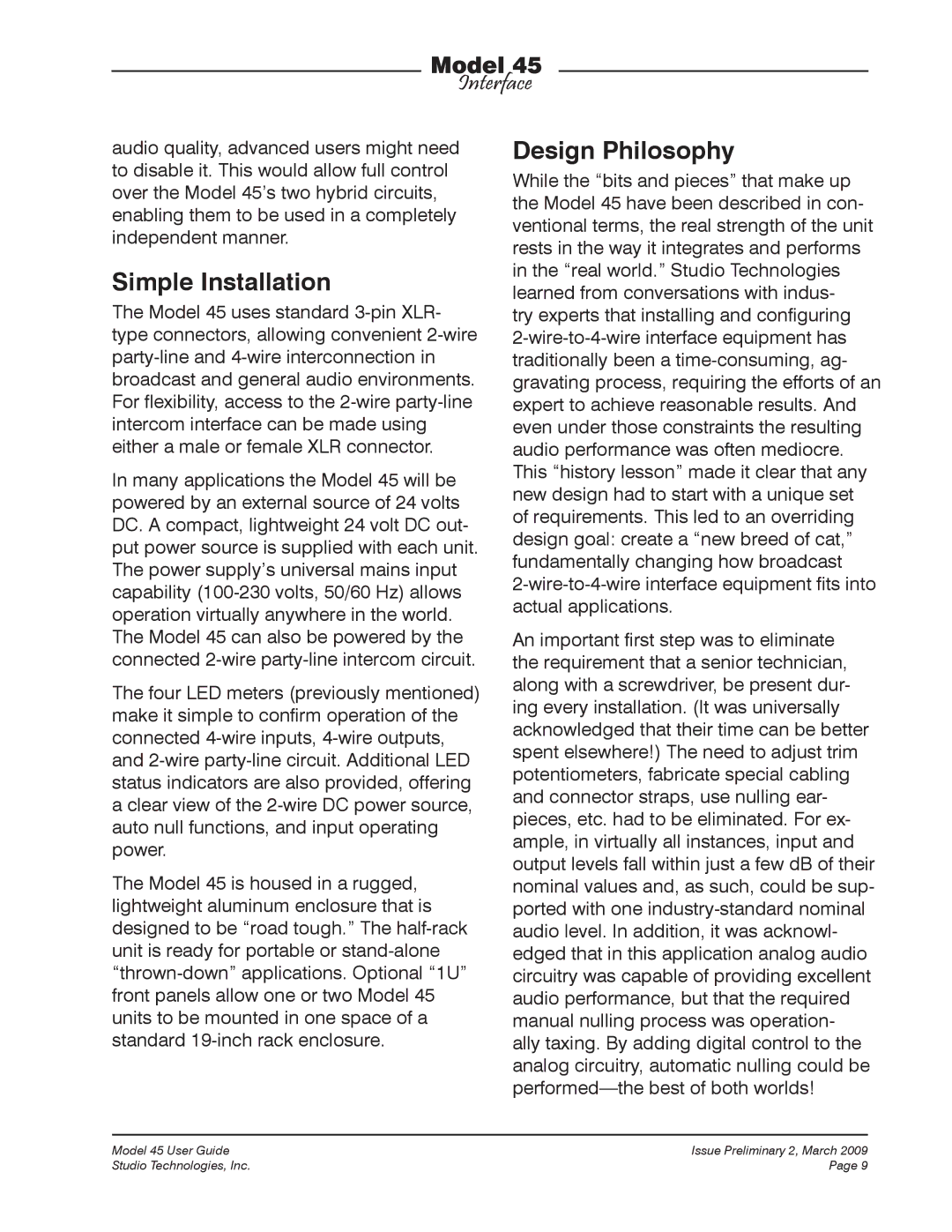audio quality, advanced users might need to disable it. This would allow full control over the Model 45’s two hybrid circuits, enabling them to be used in a completely independent manner.
Simple Installation
The Model 45 uses standard 3-pin XLR- type connectors, allowing convenient 2-wire party-line and 4-wire interconnection in broadcast and general audio environments. For flexibility, access to the 2-wire party-line intercom interface can be made using either a male or female XLR connector.
In many applications the Model 45 will be powered by an external source of 24 volts DC. A compact, lightweight 24 volt DC out- put power source is supplied with each unit. The power supply’s universal mains input capability (100-230 volts, 50/60 Hz) allows operation virtually anywhere in the world. The Model 45 can also be powered by the connected 2-wire party-line intercom circuit.
The four LED meters (previously mentioned) make it simple to confirm operation of the connected 4-wire inputs, 4-wire outputs, and 2-wire party-line circuit. Additional LED status indicators are also provided, offering a clear view of the 2-wire DC power source, auto null functions, and input operating power.
The Model 45 is housed in a rugged, lightweight aluminum enclosure that is designed to be “road tough.” The half-rack unit is ready for portable or stand-alone “thrown-down” applications. Optional “1U” front panels allow one or two Model 45 units to be mounted in one space of a standard 19-inch rack enclosure.
Design Philosophy
While the “bits and pieces” that make up the Model 45 have been described in con- ventional terms, the real strength of the unit rests in the way it integrates and performs in the “real world.” Studio Technologies learned from conversations with indus- try experts that installing and configuring 2-wire-to-4-wire interface equipment has traditionally been a time-consuming, ag- gravating process, requiring the efforts of an expert to achieve reasonable results. And even under those constraints the resulting audio performance was often mediocre. This “history lesson” made it clear that any new design had to start with a unique set of requirements. This led to an overriding design goal: create a “new breed of cat,” fundamentally changing how broadcast
2-wire-to-4-wire interface equipment fits into actual applications.
An important first step was to eliminate the requirement that a senior technician, along with a screwdriver, be present dur- ing every installation. (It was universally acknowledged that their time can be better spent elsewhere!) The need to adjust trim potentiometers, fabricate special cabling and connector straps, use nulling ear- pieces, etc. had to be eliminated. For ex- ample, in virtually all instances, input and output levels fall within just a few dB of their nominal values and, as such, could be sup- ported with one industry-standard nominal audio level. In addition, it was acknowl- edged that in this application analog audio circuitry was capable of providing excellent audio performance, but that the required manual nulling process was operation- ally taxing. By adding digital control to the analog circuitry, automatic nulling could be performed—the best of both worlds!

